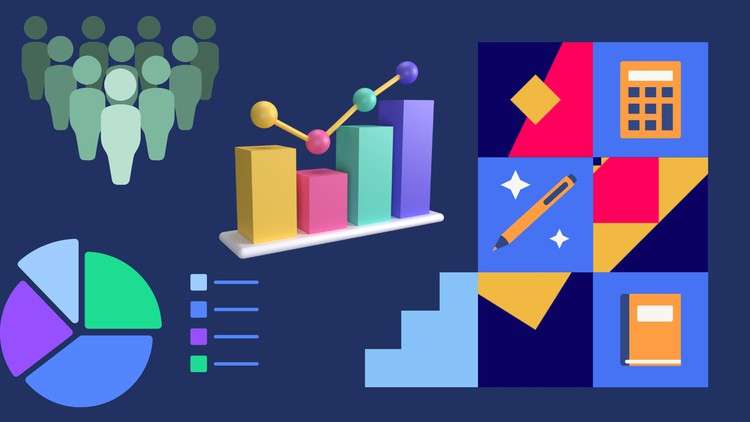
Scales of measurement, Basic Terms used, Tabulation & Graphical representation
What you will learn
Learners will be able to explain about the basic statistics.
Learners will be able to describe the theoretical base of statistical tests.
Learners will be able to use of statistic in educational research.
Learner will be able to execute different tests in educational research.
Description
Course Overview:
This course provides a comprehensive introduction to the fundamentals of statistics as applied to the field of education. Participants will explore key statistical concepts, techniques, and their practical applications in educational research, assessment, and decision-making.
Course Duration:
2 weeks – This course is structured to provide a thorough understanding of the basics of statistics in education through a series of engaging modules.
Course Objectives:
1. Foundational Understanding:- Gain a solid foundation in basic statistical concepts, including measures of central tendency, dispersion, and probability.
2. Data Analysis Techniques:- Explore common data analysis techniques used in educational research, such as hypothesis testing, correlation, and regression.
3. Practical Applications:- Understand how statistics is employed in educational contexts for data-driven decision-making, assessment, and policy formulation.
4. Hands-On Experience:- Apply theoretical knowledge through hands-on exercises, interpreting real-world educational data sets.
5. Interpretation Skills:- Develop skills in interpreting statistical findings and communicating results effectively to diverse audiences.
Course Modules:
1. Introduction to Statistics in Education:- Overview of the role of statistics in educational research and decision-making.
2. Descriptive Statistics:- Understanding and calculating measures of central tendency and dispersion.
3. Probability in Education:- Introduction to probability theory and its relevance in educational contexts.
4. Inferential Statistics:- Hypothesis testing, confidence intervals, and understanding statistical significance.
5. Correlation and Regression:- Exploring relationships between variables in educational data.
6. Data Visualization:- Techniques for visually representing educational data for effective communication.
7. Practical Applications in Education:- Applying statistical techniques to analyze educational scenarios and make informed decisions.
Assessment:
Assessment will be based on participation in discussions, completion of practical exercises, and a final project applying statistical methods to an educational research question.
Who Should Enroll:
This course is suitable anyone interested in understanding the fundamental concepts of statistics and its application in the educational domain.
Join us in unraveling the power of statistics to drive informed decisions and contribute to the advancement of education!
Enroll now and embark on a journey to master the Basics of Statistics in Education.
Dr. Hafsah Jan
Central University of Kashmir
Content